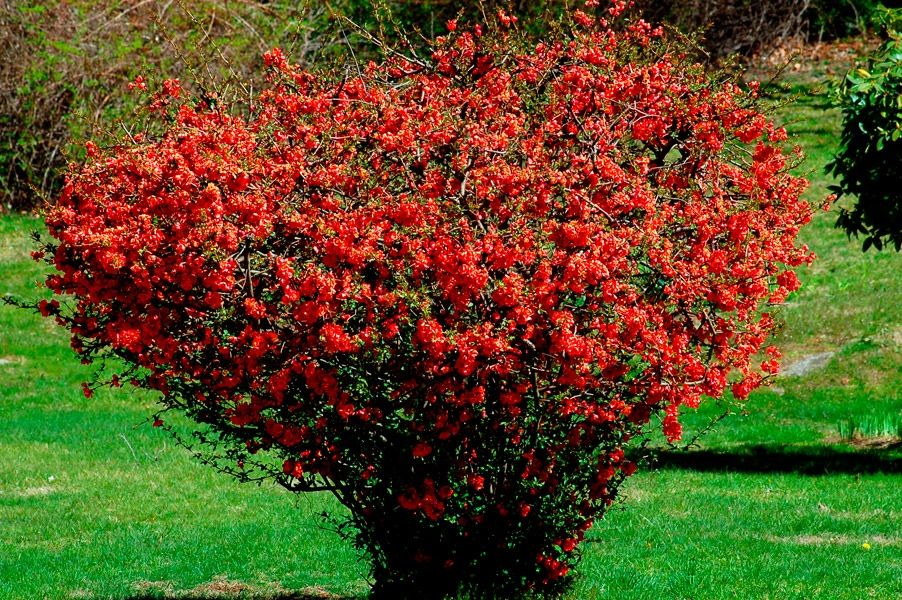Every gardener dreams of, to decorate its site with plants, that bloom beautifully, bear fruit abundantly and do not require serious maintenance. These useful qualities are combined in henomeles or Japanese quince. acquire quince seedlings можно в питомнике “Плодовый Крупномер”.
Description
The plant is very decorative. It is a bush tall 80-90 cm or multi-stem tree, reaching 3 meters in height. Leaves are small, bright green, scalloped. In May, thorny branches are covered with many flowers.. Depending on the variety, their color is orange., red, pink or white. They don't fall off within 3-4 weeks. Yellow fruits ripen by autumn, like apples.
Where to plant
Henomeles unpretentious and drought tolerant. Blossoms and bears best on the south side, calm, sunny place. Any soil suits him, except for alkaline and salted. But on loose fertile soil, quince will grow better and have larger fruits..
How to care
The shrub is not very susceptible to disease, practically does not suffer from pests and does not provide for complex self-care.
Planting is preferably done in spring.. A heat-loving seedling during autumn planting may not have time to take root. The pit is prepared in advance, fill it with compost and fertile soil
- Care. In the first year, a young plant needs watering once a 10-15 days. On the second - once in 15-20 days. The root of an adult chaenomeles grows on 3-4 м в глубину – и необходимость в поливе исчезает. For abundant flowering and fruiting (starting from 2-3 of the year) make top dressing with soluble mineral and organic fertilizers.
- Pruning. Once in 7-8 years doing anti-aging pruning. Old branches are cut to the root, leave up 15 young healthy shoots. If the bush is frozen, damaged parts are cut off in spring. Japanese quince tolerates pruning and recovers quickly.
- Wintering. Chaenomeles tolerates frosts well down to minus 25 ° С. In regions with colder winters, they huddle in the fall., branches are bent to the ground and covered with non-woven material, fallen leaves or spruce branches.
Fruiting
Fruiting begins at 3-4 year. Japanese quince cross-pollinated. To get a good harvest, plant several specimens side by side.. Under favorable conditions and proper care, one bush is removed to 4 kg of fruits weighing 60-70 city. So that they do not lose useful qualities, the harvest is harvested before the frost starts. Fruits ripen and keep well at room temperature.
Application
Quince "apples" contain a large amount of organic acids and vitamin C. For this they were nicknamed the northern lemon.. They are not eaten raw.: too sour taste and firm structure. But jam, jams, chaenomeles compotes will not leave anyone indifferent. Fruits are added to meat dishes, they flavor tea and alcoholic beverages, make candied fruits.
In ornamental gardening, the plant is valued for its long bright flowering., the ability to form a bush and unpretentiousness. From Japanese quince create hedges, use it as a tapeworm and in mixborders.